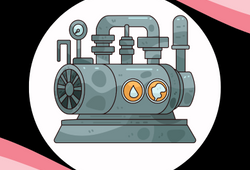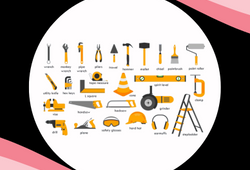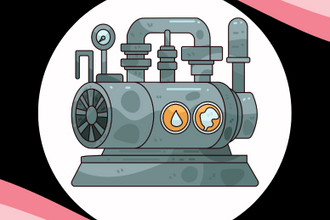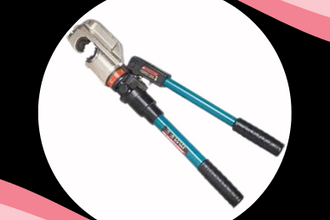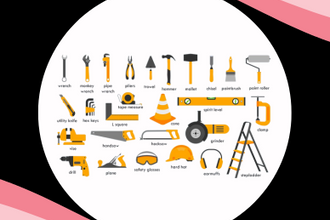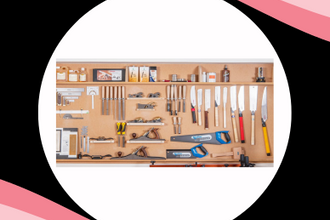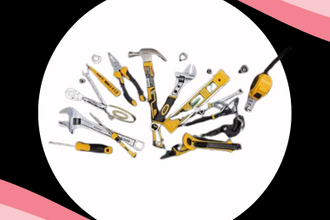What is a Plier?
A plier is a hand tool used to grip, bend, cut, or twist materials like wires and small parts. It has two handles and strong jaws, making it a reliable tool for many tasks. Pliers are commonly used at home, in workshops, and on job sites. They help make everyday tasks easier and more efficient.
Pliers can hold or grip objects tightly, cut wires and cables, bend or twist metal pieces, remove nails or pins, and even crimp connectors in electrical work. These simple tools are essential for both light tasks and heavy-duty jobs.
Different Parts of Pliers and their Functions
Handles
Provide grip and leverage for using the pliers. Made of rubber, plastic, or metal for comfort.
Jaws
The working part of the pliers, used for gripping, twisting, or cutting materials. They can be smooth or textured.
Pivot Point (Hinge)
Where the handles are connected, allowing the jaws to open and close.
Nose (Tip)
The pointed end of the jaws, useful for precise work in tight spaces.
Cutting Edges
Sharp edges near the tip, used for cutting wires, nails, or other materials.
Gripping Surface
Located inside the jaws, often serrated, for holding objects securely.
Springs (in some models)
Automatically opens the jaws when released, making operation easier.
Bolted Joint (in some models)
Allows for adjustments in the jaw width for more flexibility.
Common Types of Pliers
1. Slip Joint Pliers
These pliers have adjustable jaws that allow you to widen or narrow the gripping area. They are ideal for gripping and light turning tasks.
2. Needle Nose Pliers
These pliers have long, thin jaws, making them ideal for working in tight spaces. They are commonly used for bending wires and picking up small objects.
3. Long Nose Pliers
Similar to needle nose pliers, but slightly longer, these pliers are great for reaching into narrow or deep areas, offering more control in tight spots.
4. Cutting Pliers
Also called diagonal pliers, these have sharp edges designed for cutting wires, nails, and other small materials with precision and ease.
5. Linesman Pliers
These strong pliers combine cutting and gripping functions, making them ideal for electrical work and heavy-duty jobs like twisting wires.
6. Tongue and Groove Pliers
Featuring wide, adjustable jaws, these pliers are designed for gripping and turning pipes, often used in plumbing and automotive repairs.
7. Locking Pliers
Also known as vise-grip pliers, these pliers lock tightly onto objects, providing a firm hold for holding, turning, or pulling items.
8. Bent Nose Pliers
These pliers have a bent tip, which allows them to work in tricky or hard-to-reach angles, making them ideal for tasks like jewelry making and electronics.
9. Fencing Pliers
Multi-functional pliers designed for tasks like cutting, twisting, and pulling wire, commonly used in fencing and agricultural work.
10. Combination Pliers
These pliers combine gripping jaws and a wire cutter, making them a versatile tool suitable for general use and a common item in most toolboxes.
11. Water Pump Pliers
These pliers feature wide, adjustable jaws, making them perfect for plumbing tasks and gripping round pipes or fittings.
12. Grip Pliers
Also known as locking pliers, grip pliers provide a strong, secure hold on objects, making them useful for tasks requiring extra force and stability.
13. Monkey Pliers
These pliers have small teeth inside the jaws, making them ideal for gripping small round parts or pipes in tight spaces.
Uses of Pliers
- Hold small objects firmly.
- Cut wires and cables.
- Bend or twist metal parts.
- Remove nails or pins.
- Grip and turn nuts or bolts.
- Help with electrical or mechanical work.
- Useful in craft, DIY, and repair jobs.
Conclusion
If you're looking for strong and reliable tools, Emirates Essential is a trusted plier supplier in Dubai UAE. They offer quality pliers built for both professionals and DIY users. Choose the right tool and get the job done right.
People Also Read
Different Types of Grease Guns: A Simple Guide for Everyone
Different Types of Wood Chisels and Their Uses
A Know-How Guide to Different Types of File Tools and Their Uses



